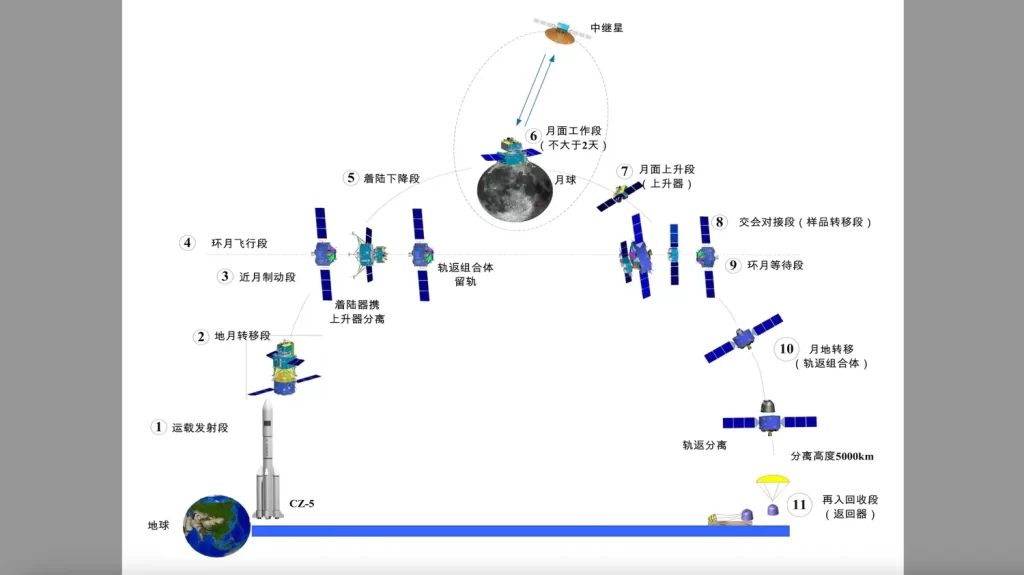
China has officially launched its first mission in history to collect samples from the far side of the Moon. The Chang’e-6 mission will land on the far side of the Moon, collect samples and send them back to Earth.
China has launched one of its crucial lunar missions to bring lunar rock and soil from the far side of the Moon. The robotic Chang’e 6 mission was recently launched on a Long March 5 rocket from the Wenchang Space Launch Site. If all goes according to plan, Chang’e 6 will land on the far side of the Moon, collect some samples and send them back to Earth.
There has never been a sample collection mission from the far side of the Moon before. In fact, only one mission has ever soft-landed on the far side of the Moon. That was China’s Chang’e 4 in 2019.
The far side of the Moon
The Moon is a celestial body that is gravitationally locked to the Earth and has the same rotation period around its axis as around the Earth. This means that observers on Earth can only see one side of the Moon. That’s why we call the side of the Moon that we can’t see “the dark side or far side of the Moon”.
In fact, this side is not dark, this is just a translation error that is now common in Turkish. On the other hand, the first time we saw the far side of the Moon was in 959 with the Lunar 3 spacecraft sent by the Soviet Union. In addition, most lunar missions so far have been to the side of the satellite closer to us. There is a very simple reason for this: convenience.
A mission to the far side is complicated by communication difficulties. Overcoming this requires a communications satellite orbiting the Moon. China launched one such relay satellite, Queqiao, before Chang’e 4, and sent another, Queqiao 2, into lunar orbit last March to prepare for Chang’e 6 and subsequent surface missions.
Another factor that makes traveling to this far side difficult is its surface structure. The Moon’s far side has a lot of craters and, unlike the known face, it lacks plains – areas suitable for landing.
We know very little

Wu Weiren, chief designer of China’s lunar exploration program, told Xinhua, “Collecting and bringing back samples from the far side of the Moon will be an unprecedented achievement. We know very little about the far side of the Moon.” If all goes well, Chang’e-6 will land in the South Pole-Aitken Basin on the far side of the Moon.

Chang’e 6 is a complex mission consisting of four elements: a lunar orbiter, a lander, an ascent vehicle and a return module to Earth. The spacecraft is expected to reach lunar orbit within four to five days after separation from the rocket. Chinese scientists plan for it to land on the surface in early June.
Chang’e-6 is expected to spend two days in the lunar soil, extracting samples weighing about 2 kilograms and sealing them in a container. This material will then be launched on a booster that will rendezvous with the lunar orbiter. The samples will then be transferred to the re-entry module, which will land in Mongolia. The entire journey from today’s launch to the arrival of the samples on Earth is expected to take 53 days. According to Chinese scientists, the collected samples will have a geological age of about 4 billion years.






